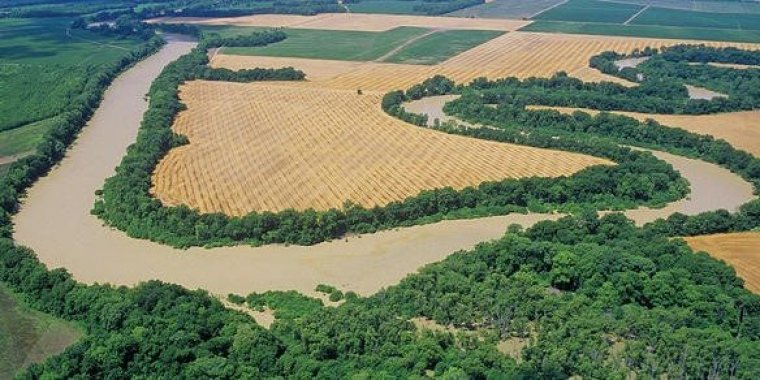| News / Science News |
Agricultural runoff contributes to climate change
Nitrous oxide (N2O) is a potent greenhouse gas, with a warming potential of approximately 300 times that of carbon dioxide. From fertilizer runoff in farm fields, an increasing load of nitrogen is washing into rivers and streams. There nitrogen-breathing microbes can break down fertilizer into N2O which is released into the atmosphere as a river tumbles toward the ocean.

Scientists have discovered how rivers, bearing increased loads of nitrogen, emit greenhouse gases. Photo: USGS
Until now, scientists haven't had a clear picture of how the process works, what fraction of the runoff winds up as N2O, or what steps might be taken to mitigate emissions.
"Humans are fundamentally altering the nitrogen cycle," said Matthew Winnick, author of a paper and a geoscientist at the University of Massachusetts Amherst. "We've changed how nitrogen moves through the environment."
Much of that change can be attributed to large amounts of nitrogen-rich chemical fertilizers spread on agricultural fields that run off into streams and rivers when it rains, where they’re then converted to nitrate.
Scientists have long known that microbes in the soil and in streambeds contribute to the "denitrification process," where nitrate is converted to either harmless dinitrogen gas or N2O. But the mechanics of the conversion process have remained a mystery, as evidenced by the wide range of N2O emissions estimates -- somewhere between 0.5% and 10% of global emissions -- annually attributable to streams.
With support from the U.S. National Science Foundation, Winnick revisited a large experimental dataset that quantified N2O in 72 streams across the U.S. using a combination of chemical reaction models, which trace how nitrogen is transformed through a stream system, and stream turbulence models, which capture how the mechanical forces of a river deliver nitrate to its bed, where denitrification occurs.
Winnick suggests that this new understanding of nitrogen cycling could help inform efforts to mitigate climate change. Justin Lawrence, a program director in NSF's Division of Earth Sciences, added, "These findings illustrate the important roles rivers and streams play in regulating Earth's climate." (National Science Foundation)
YOU MAY ALSO LIKE





